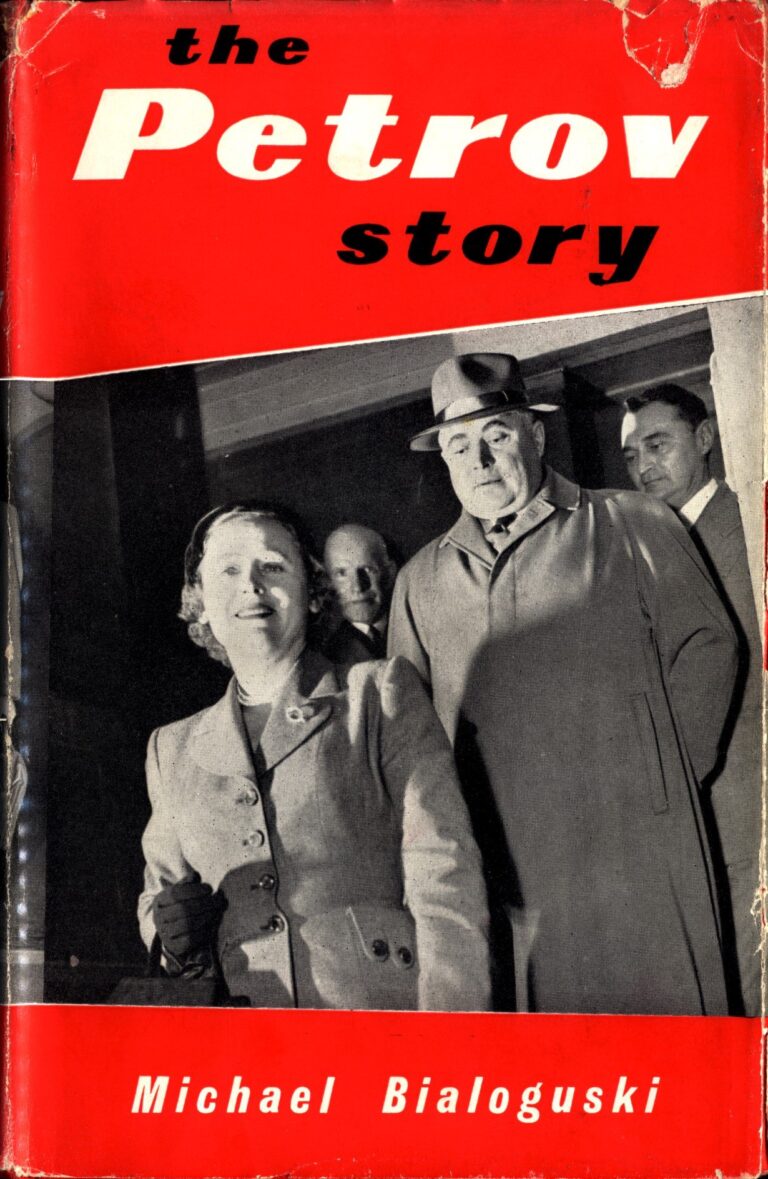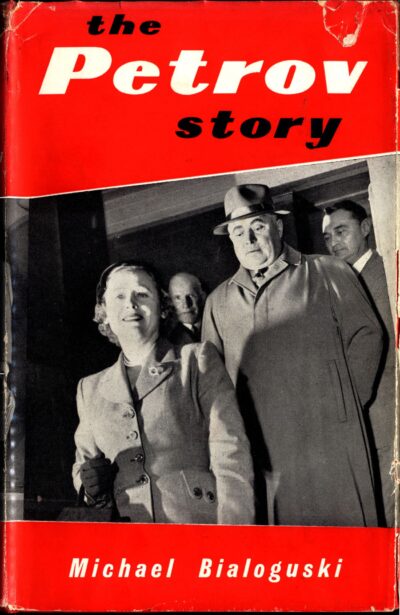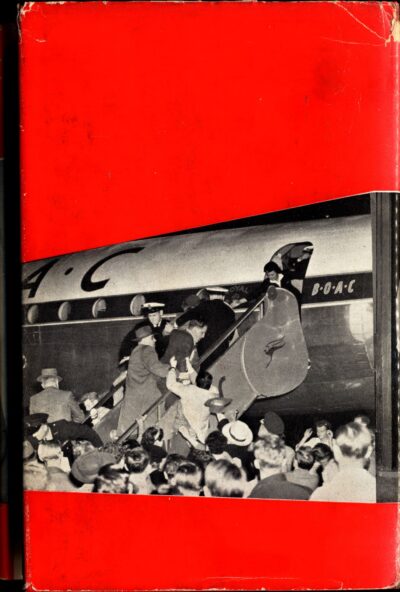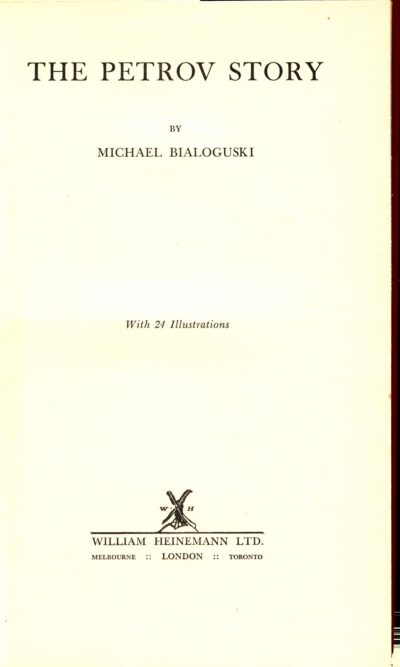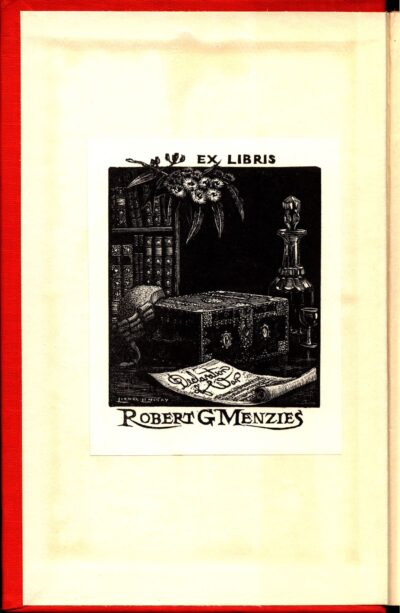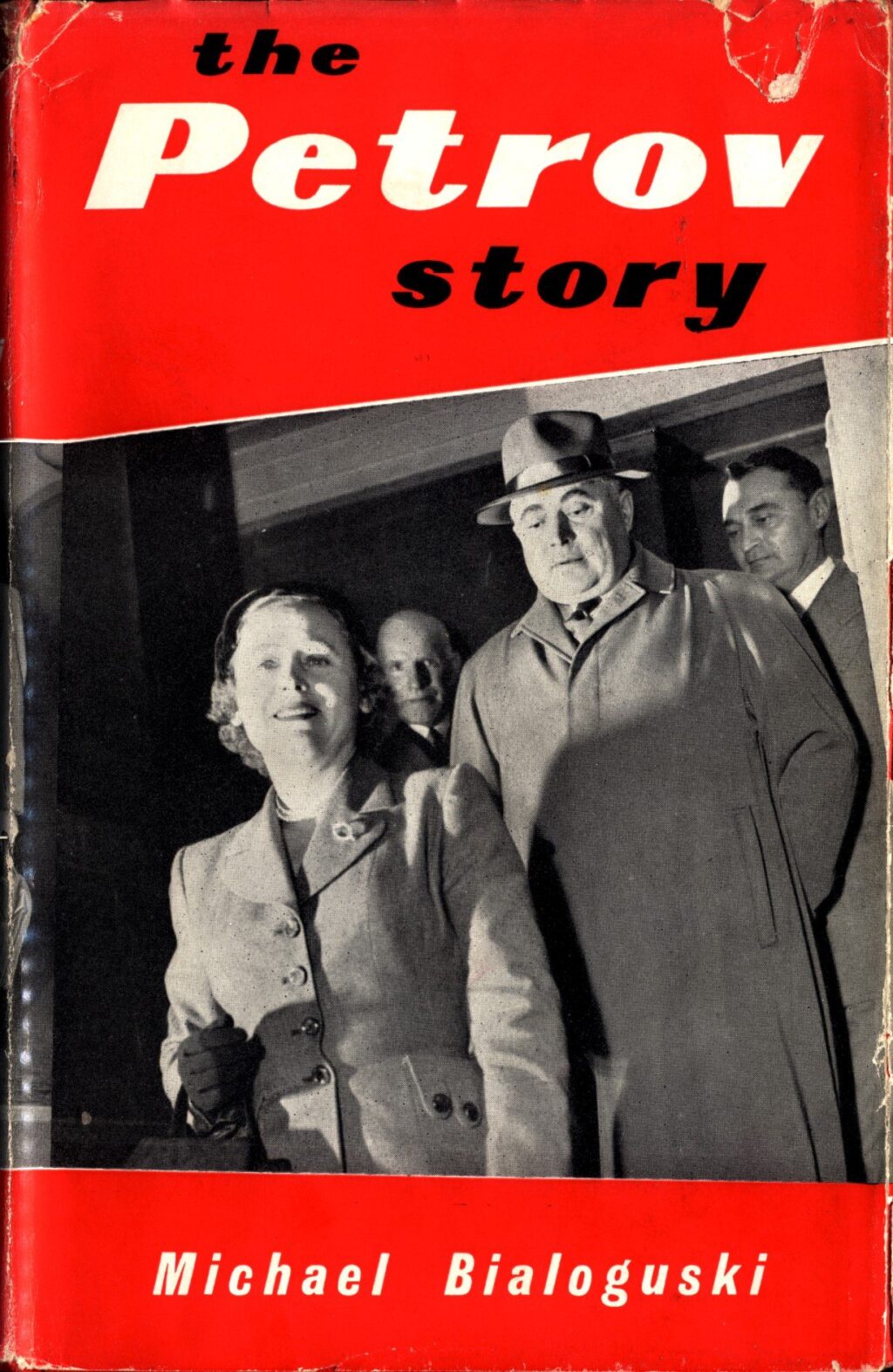Michael Bialoguski, The Petrov Story (1955)
Michael Bialoguski was the man who claimed to be primarily responsible for the defection of Soviet Official Vladimir Petrov – a defining moment in Australian history which did much to shape the Menzies era.
Bialoguski was born in 1917 in Kiev (then a part of Russia), before moving to his parents’ native homeland, Poland. His family had something of a medical background, with his mother working as a dentist and his father a veterinary surgeon, and Bialoguski would follow in their footsteps by enrolling in medicine at Stephen Bathory University. After the Soviet Union teamed up with Nazi Germany in invading Poland in 1939, Bialoguski was allegedly arrested for protesting the Red Army’s occupation, and he subsequently fled Europe arriving in Sydney in 1941.
Enlisting in the Australian Army Medical Corps, at the war’s conclusion he was able to update his medical credentials with a degree from the University of Sydney and began working at a general practice in Thirroul. However, Bialoguski was only mildly interested in being a doctor, instead maintaining keen interests in music, spy drama, and anti-communism. Consequently, he offered his services to the Commonwealth Investigation Service in 1945, playing off of the fact that his Eastern European background could help him infiltrate the local Russian community.
Sydney then had quite a sizeable Russian population, and while most of them tended to be ‘White’ anti-communists who had fled their homelands after the ‘Red’ victory in the Russian Civil War, or Displaced Persons glad to be freed from behind the iron curtain, there were a number of Soviet enthusiasts (and therefore potential ‘traitors’) who frequented a bar known as the Russian Social Club. Using the codename ‘Grigorii’, ASIO got Bialoguski to pose as a communist sympathiser and infiltrate the club, which is where he met Petrov in 1951. The two became close friends and drinking buddies, with Bialoguski coaxing Petrov towards defection and introducing him to eye surgeon H. C. Beckett, whom ASIO got to make the firm proposition to Petrov.
Unmasked by the Royal Commission into Espionage held in the immediate aftermath of the defection, Bialoguski hoped to turn himself into a celebrity spy in the mold of James Bond. The Petrov Story was meant to be his tell all account that skyrocketed him to stardom, but its release was somewhat undercut by widely published negative descriptions of him given by his ex-wife. In 1955 Bialoguski directly approached Robert Menzies hoping to be employed by the Australian security service overseas, but he was quickly rebuffed, not least because he had serious character flaws which that meant ASIO had never fully trusted him.
When ‘the Hollywood film rights he expected did not eventuate’, Bialoguski found that few people wanted a known practitioner of deception to be their doctor, and consequently his medical business sharply declined. In the end he had to move to England, shunning the fame he had so desperately sought, in order that he could salvage his career.
He left behind an Australia that had been forever changed by the Petrov Affair and its primary political fallout the Great Labor Split – something which helped Menzies to achieve unprecedented electoral dominance.
You might also like...
Sign up to our newsletter
Sign up for our monthly newsletter to hear the latest news and receive information about upcoming events.

